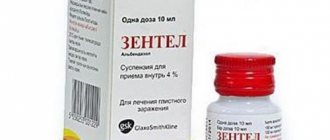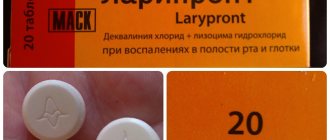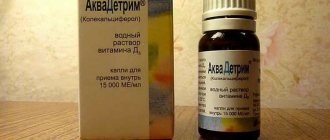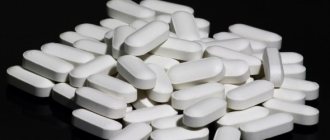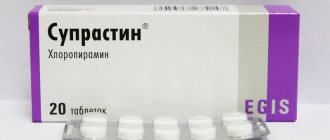PART II
The question concerns the fasting pause during anesthesia treatment.
Before surgery - do not eat for 4.5 hours, do not drink 2 hours before the start of treatment, and how long after the end of treatment can you feed the child? What are the recommendations for eating after anesthesia? We offer water and juice to the child 10 minutes after waking up; food intake is allowed 1.5 hours after waking up. After treatment, you can eat ice cream; cool food that does not need to be chewed does not cause discomfort to the child and improves the general condition. The main recommendation for the first meal after anesthesia treatment is a limitation in volume. The first portion should be approximately half the standard amount that the child eats.
How long will it take for the child to regain consciousness after anesthesia?
Due to the fact that in our clinic, during anesthesia, only the latest generation drugs are used, the child wakes up within 15-20 minutes after stopping treatment. 10 minutes after waking up, offer the baby something to drink. But, despite this, during the first hour after treatment, the anesthesiologist monitors the patient’s condition.
Tell me, does the clinic have resuscitation equipment?
Our clinic has all the necessary resuscitation equipment; without it, the clinic simply would not be given a license for this type of medical activity.
Both nitrous oxide and Sevoran are called sedation. What is the difference?
Dental treatment with nitrous oxide takes place while maintaining consciousness, and when using the drug Sevoran, the child is in a state of “medicated sleep.”
Does the pediatric dentistry “Malysh and Carlson” have a drug to combat malignant hyperthermia?
This drug is not certified on the territory of the Russian Federation, which means its use is prohibited by law. The main method of dealing with this formidable complication is a thorough history taking and identification of risk factors for the development of this complication. However, we have the ability to promptly deliver the drug Dantrolene if necessary. If risk factors are identified, it is advisable to carry out dental treatment under intravenous anesthesia, which is also possible in our clinic.
Is it possible that the child will feel pain during treatment, even while under anesthesia?
In our clinic this is completely excluded, thanks to the teamwork of anesthesiologists and dentists. Along with general anesthesia (Sevoran), local anesthesia is additionally used; during traumatic interventions, intravenous painkillers are also administered.
How do anesthesiologists administer Sevoran into the child’s body?
Our doctors use a low-flow anesthesia technique, the main advantages of which are maintaining the microclimate (humidity), preventing infection and hypothermia of the respiratory tract.
Why is Sevoran used so widely in anesthesiology now?
Sevoran has many advantages over previous similar drugs. The main ones are:
- high controllability;
- therapeutic breadth of action;
- practically not metabolized in the body;
- possibility of using low-flow anesthesia technique;
- drug of choice in patients with cardiovascular pathology.
April 18, 2019
Peculiarities
"Sevoran" is a liquid used for inhalation. It is volatile, does not smell of anything (sometimes a sweetish unexpressed odor may be present), colorless and without sediment. The main ingredient of the medicine is called sevoflurane and is contained in the solution in an amount close to 100%. It is this substance that has anesthetic properties that allow it to be used in surgery and dentistry.
The solution is sold in plastic bottles of 100 or 250 milliliters only by prescription. It should be stored in a place where the temperature will be 15-30 degrees Celsius. Freezing the liquid is prohibited, and the shelf life of such medication is 3 years. The drug is used only in a hospital setting.
The dosage of the medicine for each child is selected strictly individually.
For minor surgical interventions, the drug can be used without addition of other anesthetics.
“Sevoran” has a fairly pronounced analgesic effect, but after waking up, sensitivity returns quickly, so when treating teeth, doctors additionally use local anesthesia, and perform the most painful manipulations immediately after falling asleep, so that the discomfort is minimal. In addition, paracetamol or ibuprofen are often given after surgery.
Analogs
Among the complete analogues, one can highlight the drug Sevoflurane, the identical active component of which provides a similar effect. There are also a number of drugs with similar effects, among which you should consider:
Halothane (4000-4500 rubles) is an inhalation anesthetic that allows you to quickly put the patient into a state of anesthesia. The product has minimal agitation effect. It is used for both long-term and short-term surgical interventions. Prohibited for use in the first trimester of pregnancy, but if necessary, applicable to children.- Isoflurane (6600-7500 rubles) - also belongs to the group of inhaled medications. It practically does not cause any harm to the patient’s body. Its advantages include the fact that the drug does not disrupt the functioning of the cardiovascular system. Contraindicated in case of hypersensitivity and a sharp increase in temperature due to genetic abnormalities.
- Foran (RUB 13,400-14,300) – is a liquid for inhalation. Can be used during operational activities of varying duration. The effect of the drug during pregnancy has not been studied, but is approved for use during cesarean section. The product is suitable for treating children. Contraindications include hypersensitivity to the drug and a tendency to hyperthermia.
Despite the availability of high-quality analogues, it should be remembered that the correct selection of medications can only be carried out by a qualified medical professional. It is strictly not recommended to choose medications on your own to avoid undesirable consequences.
Adverse reactions and possible consequences
The following adverse reactions may occur:
- arrhythmia as a result of increased potassium concentration in the blood serum (the risk of this complication increases with neuromuscular diseases);
- hypermetabolism of skeletal muscles with transition to multiple organ failure (malignant hyperthermia, also most often occurs in neuromuscular diseases);
- increased excretion of protein and glucose in the urine (impaired kidney function), which develops in most cases with long-term anesthesia; urinary retention;
- nausea, cough, vomiting (if recommendations for preparation for anesthesia are not followed), increased salivation;
- apnea, shortness of breath, respiratory depression, pulmonary edema, chest discomfort;
- pancreatitis, deterioration of liver function, development of hepatitis (in rare cases); the risk of these disorders increases when using halogenated hydrocarbons as inhalation anesthesia;
- increased intracranial pressure;
- convulsions;
- bradycardia, extrasystole, atrial fibrillation and hypotension (noted in children with Down syndrome);
- the most common negative consequences are increased drowsiness, dizziness, headache, impaired consciousness; in children - transient excitement;
- chills, fever;
- allergic reactions, up to anaphylactic shock with individual intolerance.
When is it used in children?
“Sevoran” is in demand as a medicine for induction of anesthesia, that is, with the help of such a medicine, an operation is started. The anesthesiologist can limit himself to only this drug if the surgical intervention is short, for example, when removing adenoids. In addition, Sevoran is often used by dentists in childhood. Such anesthesia is used when a baby needs to have his teeth treated, but this cannot be done without anesthesia.
It has long been known that pulpitis and other problems with baby teeth cannot be ignored, because the lack of dental treatment can end badly for a permanent bite.
This method is often chosen when the patient is non-contact, when the baby has a negative attitude towards dentists and any procedures in the mouth.
Pharmacological properties
Pharmacodynamics
The use of sevoflurane allows the patient to quickly enter a state of anesthesia and ensure recovery from it. The depth of anesthesia can vary rapidly depending on changes in the content of the substance in the inhaled mixture.
When inducing anesthesia with this drug, minimal symptoms of upper respiratory tract irritation or mild agitation are observed, but sevoflurane does not provoke central nervous system stimulation and excessive secretion in the tracheobronchial tree.
Like other effective agents used in inhalational anesthesia, sevoflurane causes a dose-dependent decrease in blood pressure and respiratory depression. Studies of Sevoran anesthesia in children confirm that the use of the drug for mask induction of anesthesia is statistically less often accompanied by coughing than when using halothane. During anesthesia with sevoflurane, the threshold for the arrhythmogenic action of epinephrine is identical to that when using isoflurane and higher than when using halothane. When using isoflurane and sevoflurane, myocardial ischemia and myocardial infarction in patients with increased risk factors for developing these diseases occur equally often.
The effects of isoflurane and sevoflurane on blood circulation in the brain (cerebral perfusion pressure, intracranial pressure, cerebral oxygen metabolism, cerebral blood flow) also appear to be almost the same. Sevoflurane has minimal effect on intracranial pressure and does not suppress the response to CO2. Also, the substance does not change the concentration function of the kidneys even with prolonged anesthesia (lasting up to 9 hours).
The minimum alveolar concentration (MAC, the concentration at which 50% of patients do not exhibit a motor response to a single irritation, for example, an incision of the skin) of sevoflurane in oxygen is 2.05% in a person aged 40 years. This indicator of Sevoran, like other halogenated drugs for inhalation anesthesia, decreases with the age of the patient and when sevoflurane is mixed with dinitrogen oxide.
Pharmacokinetics
Sevoflurane dissolves slightly in the blood, which leads to a rapid increase in alveolar concentration when administered under general anesthesia and a rapid decrease after completion of inhalation. 30 minutes after inhalation administration of Sevoran, the ratio of the alveolar concentration at the end of inspiration and the concentration in the mixture prepared for inhalation reaches 0.85. During the elimination phase, the alveolar concentration ratio after 5 minutes was 0.15.
Since sevoflurane is quickly eliminated from the lungs, its participation in metabolic processes is minimized. In humans, less than 5% of the absorbed dose of Sevoran is metabolized with the participation of cytochrome P450 (isoenzyme CYP2E1) with the formation of hexafluoroisopropanol. In this case, this process is accompanied by the release of carbon dioxide and inorganic fluorine (or carbon dioxide alone). Hexafluoroisopropanol does not exhibit pharmacological activity or genotoxic properties, quickly reacts with glucuronic acid and is excreted from the body in the urine. Its toxicity is comparable to that of sevoflurane. Other pathways of metabolism of the active component of Sevoran have not been identified. Sevoflurane is considered the only fluorinated anesthetic volatile that is not metabolized to trifluoroacetic acid.
The content of fluoride ions is determined by the duration of general anesthesia, the composition of the anesthesia mixture and the concentration of sevoflurane administered. The use of barbiturates does not cause defluoridation of sevoflurane. Approximately 7% of adult patients whose inorganic fluoride levels were measured in clinical studies had concentrations greater than 50 µmol/L. None of the subjects showed clinically significant changes in renal function.
Instructions:
Clinical and pharmacological group
21.001 (Drug for inhalation anesthesia)
Release form, composition and packaging
Liquid for inhalation is transparent, colorless, volatile.
| 1 fl. | |
| sevoflurane | 100 ml |
100 ml - dark colored naphthalate polyethylene bottles (1) - cardboard packs. 100 ml - dark naphthalate polyethylene bottles (6) - cardboard boxes.
Liquid for inhalation is transparent, colorless, volatile.
| 1 fl. | |
| sevoflurane | 250 ml |
250 ml - dark-colored naphthalate polyethylene bottles (1) - cardboard packs. 250 ml - dark-colored naphthalate polyethylene bottles (6) - cardboard boxes.
pharmachologic effect
Drug for inhalation anesthesia. Inhalation use of the drug for induction of anesthesia causes a rapid loss of consciousness, which quickly recovers after cessation of anesthesia.
Induction of anesthesia is accompanied by minimal agitation and signs of irritation of the upper respiratory tract and does not cause excessive secretion in the tracheobronchial tree and stimulation of the central nervous system. Sevoflurane (like other powerful inhalation anesthetics) causes dose-dependent suppression of respiratory function and a decrease in blood pressure. In humans, the threshold level of sevoflurane, which causes the development of arrhythmias under the influence of epinephrine (adrenaline), was comparable to that of isoflurane and exceeded the threshold level of halothane.
Sevoflurane has minimal effects on intracranial pressure and does not reduce the response to CO2. Does not have a clinically significant effect on liver or kidney function and does not cause an increase in renal or liver failure. Does not affect the concentration function of the kidneys even with prolonged anesthesia (up to about 9 hours).
The minimum alveolar concentration (MAC) is the concentration at which 50% of patients do not experience a motor response in response to a single irritation (skin incision). The MAC of sevoflurane in oxygen is 2.05% in an adult aged 40 years. The MAC of sevoflurane, like other halogenated drugs, decreases with age and with the addition of nitric oxide.
Properties of sevoflurane
Sevoflurane is non-flammable and non-explosive as required by International Electrotechnical Commission 601-2-13.
Sevoflurane does not contain additives or chemical stabilizers. Sevoflurane is non-caustic. It is miscible with ethanol, ether, chloroform and benzene and is very slightly soluble in water.
Sevoflurane breakdown products
Sevoflurane remains stable when stored under normal room lighting. Sevoflurane does not degrade significantly in the presence of strong acids or when exposed to heat. Sevoflurane is non-corrosive to stainless steel, copper, aluminum, nickel-plated copper, chrome-plated copper and copper-beryllium alloy.
Chemical degradation products may appear due to direct contact of inhalational anesthetics in the device with the CO2 sorbent. When using new sorbents, the risk of sevoflurane decomposition is minimal and its decomposition products are not toxic or undetectable. Acceleration of the formation of significant quantities of sevoflurane decomposition products occurs when heating an overdried CO2 sorbent (especially containing sodium hydroxide - Baralyme), increasing the concentration of sevoflurane and reducing the supply of fresh gas to the breathing circuit. Sevoflurane undergoes alkaline degradation in two ways, in the first of which, with the loss of HF, pentafluoroisopropenyl fluoromethyl ether, known as component A, is formed. In the second case, which is possible only with direct contact of sevoflurane with an overdried CO2 sorbent, sevoflurane dissociates to hexafluoroisoprapanol and formaldehyde. Hexafluoroisoprapanol is inactive, has no genotoxicity, and after rapid glucuronidation the level of toxicity is comparable to sevoflurane. Formaldehyde is present in normal metabolic reactions and, upon contact with an overdried sorbent, in turn breaks down to methanol and formate. Carbon monoxide is subsequently formed from formate under the influence of high temperature. Methanol can react with component A, and as a result of methoxylation, component B is additionally formed. Component B undergoes further HF elimination to form components C, D and E. If the use of a significantly overdried sorbent, especially Baralyme, is continued, the formation of formaldehyde, methanol, oxide carbon, component A and possibly some other products - components B, C and D.
Pharmacokinetics
Solubility
The low solubility of sevoflurane in the blood ensures a rapid increase in alveolar concentration upon induction of anesthesia and a rapid decrease after cessation of inhalation. The ratio of alveolar concentration and concentration in the inhaled mixture in the accumulation phase 30 minutes after inhalation of sevoflurane is 0.85. During the elimination phase, the ratio of alveolar concentrations 5 minutes after inhalation of sevoflurane is 0.15.
Distribution and metabolism
The rapid clearance of sevoflurane from the lungs minimizes drug metabolism. In humans, less than 5% of the absorbed dose of sevoflurane is metabolized by the CYP2E1 isoenzyme to form hexafluoroisopropanol, releasing inorganic fluorine and carbon dioxide (or carbon dioxide alone). The resulting hexafluoroisopropanol is quickly conjugated with glucuronic acid and excreted in the urine. Other pathways of sevoflurane metabolism have not been established. Sevoflurane is the only fluorinated volatile anesthetic that is not metabolized to trifluoroacetic acid.
The concentration of fluoride ions depends on the duration of anesthesia, the concentration of sevoflurane administered and the composition of the anesthesia mixture.
Barbiturates do not cause defluoridation of sevoflurane.
Approximately 7% of adults who had inorganic fluoride concentrations measured in Abbott's clinical studies were greater than 50 μM; There were no clinically significant changes in renal function in any of these patients.
Dosage
Premedication agents should be selected by the anesthesiologist individually.
General anesthesia during surgery
When performing general anesthesia, it is necessary to know the concentration of Sevoran coming from the evaporator. To do this, you can use a vaporizer specifically calibrated for sevoflurane.
Introduction to general anesthesia
The dose is selected individually and titrated until the desired effect is achieved, taking into account the age and condition of the patient. After inhalation of Sevoran, a short-acting barbiturate or other drug can be administered for intravenous induction of general anesthesia. For administration to general anesthesia, Sevoran can be used in oxygen or in a mixture of oxygen and nitric oxide.
Before surgical interventions in adults and children, inhalation of Sevoran at a concentration of up to 8% usually provides induction of general anesthesia in less than 2 minutes.
Maintenance general anesthesia
The required level of general anesthesia can be maintained by inhalation of sevoflurane at a concentration of 0.5-3% in combination with or without nitric oxide.
MAC values for adults and children, taking into account age.
| Patient's age | Sevoflurane in oxygen | Sevoflurane in 65% N2O/35% O2 |
| 0-1 month* | 3.3% | |
| 1-<6 months | 3.0% | |
| 6 months-<3 years | 2.8% | 2.0%** |
| 3-12 years | 2.5% | |
| 25 years | 2.6% | 1.4% |
| 40 years | 2.1% | 1.1% |
| 60 years | 1.7% | 0.9% |
| 80 years old | 1.4% | 0.7% |
* - full-term newborns. MAC was not determined in premature newborns.
** - in children from 1 year to 3 years old, 60% N2O/40% O2 was used
With age, MAC decreases. The average concentration of sevoflurane that provides MAC in a patient aged 80 years is approximately 50% of that in a patient aged 20 years.
Patients usually quickly recover from general anesthesia with Sevoran. Therefore, postoperative analgesia may be required earlier.
Overdose
Treatment: Sevoran administration should be discontinued, the airway should be maintained, assisted or controlled ventilation with oxygen should be initiated, and adequate cardiovascular function should be maintained.
Drug interactions
The safety and effectiveness of Sevoran has been confirmed when used simultaneously with various drugs that are often used in surgical practice, including drugs that affect the functions of the central nervous system, the autonomic nervous system, muscle relaxants, antimicrobial drugs (including aminoglycosides), hormones and their synthetic analogues, blood products and cardiovascular drugs, including epinephrine (adrenaline).
The ability of sevoflurane to displace drugs from binding to serum and tissue proteins has not been studied.
In clinical studies, no adverse events were observed when using sevoflurane in patients who were taking drugs that actively bind to proteins and have a small Vd (for example, phenytoin).
Sevoran can be used with barbiturates as well as benzodiazepines and opioid analgesics.
Benzodiazepines and opioid analgesics are thought to reduce the MAC of sevoflurane.
The MAC of sevoflurane is reduced by concomitant use of nitric oxide.
MAC equivalents are reduced by approximately 50% in adults and by approximately 25% in children.
Sevoflurane has an effect on the intensity and duration of neuromuscular blockade caused by non-depolarizing muscle relaxants. When Sevoran is administered as an adjunct to alfentanil/N2O anesthesia, it enhances the effects of pancuronium bromide, vecuronium bromide and atracurium besylate. When these muscle relaxants are prescribed in combination with sevoflurane, their doses should be adjusted in the same way as when used with isoflurane. The effect of sevoflurane on the effect of succinylcholine and the duration of action of depolarizing muscle relaxants has not been studied.
Because an increase in the effect of muscle relaxants is observed a few minutes after the start of sevoflurane inhalation; reducing the dose of muscle relaxants during induction of anesthesia can lead to a delay in tracheal intubation or inadequate muscle relaxation.
Among non-depolarizing drugs, interactions with vecuronium bromide, pancuronium bromide and atracurium besilate have been studied. Although there are no specific recommendations for their use, nevertheless, during endotracheal intubation the dose of non-depolarizing muscle relaxants should not be reduced; During maintenance of anesthesia, doses of non-depolarizing muscle relaxants should probably be lower than during N2O/opioid analgesics. Additional doses of muscle relaxants are administered based on the response to nerve stimulation.
There is no data on the pharmaceutical incompatibility of Sevoran with other drugs.
Use during pregnancy and lactation
Category B. In reproductive studies in animals, sevoflurane in doses up to 1 MAC had no effect on reproductive function or harmful effects on the fetus.
There are no adequate controlled studies in pregnant women, so sevoflurane should only be used during pregnancy if clearly needed.
A clinical study demonstrated the safety of sevoflurane for mother and newborn when used for general anesthesia for caesarean section. The safety of sevoflurane during labor and during normal childbirth has not been established.
There is no information on the excretion of sevoflurane into breast milk. In women who are breastfeeding, the drug should be used with caution.
Side effects
Sevoflurane may cause dose-dependent suppression of cardiac and respiratory function. Most adverse reactions are mild or moderate and transient. The main adverse events possibly associated with the administration of sevoflurane are nausea, vomiting, increased cough, decreased or increased blood pressure, agitation, drowsiness after recovery from general anesthesia, chills, bradycardia, tachycardia, dizziness, increased salivation, respiratory disorders (apnea after intubation, laryngospasm) and fever.
Rare cases of postoperative hepatitis have been described, the connection of which with sevoflurane has not been established.
In children receiving sevoflurane for induction of general anesthesia, cases of self-limiting dystonic movements were observed, the connection of which with the drug has not been established. It is extremely rare that seizures occur after the use of sevoflurane. They were short, and no abnormalities were detected during recovery from general anesthesia or in the postoperative period.
Rare cases of malignant hyperthermia and allergic reactions such as rash, urticaria, pruritus, bronchospasm and anaphylactic or anaphylactoid reactions have been described. In susceptible individuals, potent inhalational anesthetics, including sevoflurane, can induce a state of skeletal muscle hypermetabolism, resulting in increased oxygen demand and the development of a clinical syndrome known as malignant hyperthermia. The first sign of this syndrome is hypercapnia, and clinical symptoms may include muscle rigidity, tachycardia, tachypnea, cyanosis, arrhythmias, and/or blood pressure instability. Some of these nonspecific symptoms may also occur during mild anesthesia, acute hypoxia, hypercapnia, and hypovolemia. Treatment of malignant hyperthermia involves discontinuation of the drugs that caused its development, intravenous administration of dantrolene sodium and supportive symptomatic therapy. Renal failure may develop later, so diuresis should be monitored and maintained if possible.
Although consciousness is usually restored within a few minutes after sevoflurane is stopped, the state of intellectual abilities within 2-3 days after general anesthesia has not been studied. For several days after using sevoflurane, as with other general anesthetics, you may experience slight mood changes. Patients should be informed that for some time after general anesthesia, the ability to perform various tasks requiring quick reactions, such as driving a car or using dangerous equipment, may deteriorate.
As with other general anesthetic agents, transient increases in glucose levels and white blood cell counts may occur.
During and after general anesthesia with sevoflurane, a transient increase in serum levels of inorganic fluoride may be observed. Its concentration usually reaches a maximum within 2 hours after stopping the administration of sevoflurane and returns to preoperative levels within 48 hours. In clinical studies, an increase in fluoride concentration was not accompanied by impaired renal function.
When using sevoflurane, cases of transient impairment of liver function tests have been described. Liver failure and liver necrosis have been reported in rare cases with the use of inhalational anesthetics, including sevoflurane. However, their connection with the use of sevoflurane has not been established.
Storage conditions and periods
List B. The drug should be stored out of the reach of children, at a temperature not exceeding 25°C. Shelf life: 3 years.
Indications
— induction and maintenance of general anesthesia in adults and children during surgical operations in the hospital and on an outpatient basis.
Contraindications
- confirmed or suspected genetic predisposition to the development of malignant hyperthermia;
- hypersensitivity to sevoflurane or other halogenated drugs.
Use with caution in case of impaired renal function or during neurosurgical interventions.
special instructions
Sevoran can only be used by doctors with experience in general anesthesia. Equipment for airway management, mechanical ventilation, oxygen therapy and resuscitation should be available.
The level of general anesthesia can change easily and quickly, so only specially calibrated vaporizers should be used to administer Sevoran. As general anesthesia deepens, an increase in arterial hypotension and suppression of respiratory function is noted.
Increasing the concentration of sevoflurane to maintain general anesthesia causes a dose-dependent decrease in blood pressure. An excessive drop in blood pressure may be associated with deep general anesthesia; in such cases it can be increased by reducing the concentration of sevoflurane supplied.
As with any means of general anesthesia in patients with coronary heart disease, it is necessary to maintain stable hemodynamics to avoid myocardial ischemia.
The use of inhalational anesthetics in children has in rare cases caused an increase in serum potassium levels, which led to the development of cardiac arrhythmias and death in the postoperative period. This condition can especially develop in patients with latent or overt neurological diseases, especially in patients with Duchenne muscular dystrophy.
In some cases there has been an association with concomitant use of succinylcholine (suxamethonium). These patients also had a significant increase in serum creatine phosphokinase levels, changes in urine composition, and myoglobinuria. In contrast to malignant hyperthermia and some similarities in presentation, such patients never experienced muscle rigidity or symptoms associated with muscle hypermetabolism. If there is a threat of the development of such conditions, especially if a latent neuromuscular disease is detected in the patient, measures to relieve hyperkalemia and persistent arrhythmia should be immediately started. Patients recovering from general anesthesia should be carefully monitored before transfer to the ward.
Replacing overdried CO2 sorbents
When using sevoflurane in anesthesia machines containing overdried CO2 sorbents (especially with sodium hydroxide - Baralyme), rare cases of excessive overheating and/or spontaneous combustion have been described. When CO2 sorbent reservoirs become overheated, there may be an unusual delay in the increase or an unexpected decrease in the respirable concentration of sevoflurane.
The exothermic reaction of sevoflurane decomposition with the formation of degradation products, which occurs when sevoflurane interacts with the CO2 sorbent, intensifies if the sorbent dries out, for example, during prolonged exposure to dry gas. The formation of sevoflurane decomposition products (methanol, formaldehyde, carbon monoxide, and components A, B, C and D) was observed in the breathing circuit of experimental anesthesia machines with overdried sorbents when the sevoflurane concentration reached a maximum of 8% for 2 or more hours. Concentrations of formaldehyde generated under such conditions reached levels capable of causing mild respiratory tract irritation. Clinical evaluation of the effects of sevoflurane degradation products on the body under extreme conditions of use has not been carried out.
If the anesthesiologist suspects that the CO2 sorbent is too dry, it should be replaced before using sevoflurane. When the CO2 sorbent dries out, the color of the indicator does not always change; therefore, the absence of changes in the color of the indicator cannot be considered confirmation of adequate hydration. CO2 sorbents must be changed regularly, regardless of the color of the indicator.
Impact on the ability to drive vehicles and operate machinery
Patients should be informed that for some time after general anesthesia, the ability to perform various tasks requiring quick reactions, such as driving a car or using dangerous equipment, may deteriorate.
Use for renal impairment
Use with caution in case of impaired renal function.
Conditions for dispensing from pharmacies
The drug is available by prescription for hospitals.
Contraindications
Contraindications for prescribing this drug include:
- a decrease in the total amount of circulating blood in severe severity;
- the risk of malignant hyperthermia, confirmed clinically (in the patient's history) or genetically determined;
- severe hypotension;
- increased intracranial pressure;
- individual sensitivity to the drug;
- breast-feeding.
It is also used with caution in the following cases:
- renal or liver failure;
- neurological diseases that involve muscle tissue;
- coronary heart disease and other pathologies of this organ (constant monitoring of hemodynamics is required);
- hereditary diseases leading to defects in the functioning of mitochondria;
- predisposition to seizures.
Security measures
When prescribing medication, the following safety precautions must be taken into account:
- combined use with beta-sympathomimetics can lead to the development of arrhythmia (especially with genetic deficiency of alpha-glucosidase);
- The fresh gas flow rate must be at least 2 l/min. to prevent the formation of a nephrotoxic metabolite when reacting with alkalis (carbon dioxide absorbers);
- the drug can only be used by specialists who have completed a special training course in general anesthesia;
- since when narcotic painkillers are prescribed as premedication, a deterioration in respiratory function is possible, constant medical supervision of the patient’s condition (ECG, blood pressure and other indicators) is required;
- when using overdried absorbent agents for carbon dioxide, spontaneous ignition of anesthesia devices may occur, which contributes to a delay in the supply of the drug, as a result of which its highest level is reached over a longer period of time (in this case, the sorbent must be replaced);
- with a deep degree of anesthesia, a significant drop in blood pressure may occur; to correct this condition, it is necessary to reduce the concentration of the drug in the inhalation mixture;
- Since recovery from anesthesia occurs quickly, additional pain relief may be required during the recovery period.
In the next 2-3 days, some patients may experience minor changes in mood, and in children, in ¼ of cases, motor restlessness and deterioration in social interaction with others are observed.
special instructions
The medication can only be used by medical specialists who have the skills to administer general anesthesia in specialized departments equipped with ventilators, restoring the patency of the respiratory system, resuscitation, and oxygen therapy . The concentration of the active substance that comes from the evaporator must be precisely known. For this purpose, calibration evaporators are used specifically for the drug Sevoran , because All inhalational anesthetics differ in their physical properties.
The dose of Sevoflurane is selected on an individual basis, assessing the patient’s overall response. An increase in concentration may be accompanied by respiratory depression and increased severity of arterial hypotension .
Cases of QT prolongation on the ECG have been reported (less often there was a connection with tachycardia of the “pirouette” type, extremely rarely with a fatal outcome). The medication is used with caution in patients with these complications. Ventricular arrhythmias have been reported in pediatric subjects with Pompe disease .
Use with caution in persons suffering from mitochondrial diseases . As the concentration of the active substance increases, a dose-dependent drop in blood pressure is observed, which may be associated with the depth of general anesthesia. In such cases, it is recommended to reduce the concentration of the anesthetic administered.
To prevent ischemic changes in the myocardium in people suffering from coronary artery disease, it is necessary to maintain stable hemodynamics. Before transfer to a specialized department after recovery from anesthesia, additional observation of the patient by specialists of the appropriate profile is mandatory.
In pediatric practice, cases of increased potassium concentration in the blood have been reported, which provoked arrhythmias and could cause death. At risk are young patients with Duchenne muscular dystrophy and various neurological diseases that occur latently or overtly. There was a more frequent pattern with the use of Suxamethonium (succinylcholine), and patients had an increase in creatine phosphokinase, myoglobinuria and changes in the composition of urine.
Differential diagnosis of malignant hyperthermia is based on the absence of symptoms associated with muscle metabolism , as well as muscle rigidity . When diagnosing neuromuscular pathology, antiarrhythmic measures and procedures to relieve hyperkalemia are carried out. Patients recovering from general anesthesia should be assessed by specialists before transport.
Consequences of using anesthesia with Sevoran
For some time after general anesthesia, patients may experience difficulties performing complex work or driving vehicles, which is reversible.
Use during pregnancy and lactation
The results of reproductive studies in animals indicate that the administration of Sevoran in doses not exceeding 1 MAC did not have a negative effect on reproductive function and did not contribute to the occurrence of malformations in the fetus.
No studies have been conducted on the effects of the drug on pregnant women. During pregnancy, Sevoran can be used only in cases where the expected benefit to the mother significantly outweighs the potential risks to the fetus.
Since there is no information on the excretion of sevoflurane in breast milk, during lactation patients are advised to refrain from breastfeeding while using this anesthetic agent and for 48 hours after its use.
Experiments have convincingly confirmed the safety of Sevoran for mothers and newborns when used for general anesthesia during cesarean section. The safety of the drug during labor and after the onset of vaginal labor has not been precisely determined. Sevoflurane promotes relaxation of the uterine muscles, which presumably increases the potential risk of developing uterine bleeding
During obstetric operations, Sevoran should be used with caution.
Forms of release, packaging, composition
Sevoran is an anesthesia for children (parental reviews most often describe the consequences as insignificant), which is used in inhalation form. It is a transparent, colorless liquid with a high degree of volatility, that is, it easily passes from a liquid to a gaseous state.
The drug is available in dark bottles made of polyethylene naphthalate, a polymer that has high chemical resistance. The secondary packaging is a cardboard box. Bottles can have a capacity of 100 and 250 ml.
The main and only component of the drug is sevoflurane. In its chemical structure, it is an ether subjected to halogenation, in which the hydrogen atom is replaced by fluorine.
It has low solubility in the blood, does not have a specific pungent odor and is characterized by a rapid increase in alveolar concentration, at which half of the patients in the test group do not respond to an incision made on the skin (there is no reflex motor reaction associated with the transmission of a nerve signal).
In Russia, the drug is sold by the representative office of the American biopharmaceutical company ABBVIE. The drug does not contain any additives or additional stabilizers.
The main active component has the following characteristics:
- practically does not decompose under the influence of acids and heat;
- chemically inert, does not corrode materials;
- does not cause corrosion of metals and alloys upon contact with them (including stainless steel, copper, aluminum, nickel, chrome coatings);
- mixes well with ethyl alcohol, other volatile liquids, chloroform, hydrocarbons (in particular, benzene); poorly soluble in water;
- may undergo decomposition when interacting with carbon dioxide in an anesthesia machine, as well as when using dry absorbents containing potassium hydroxide;
- remains stable under normal room lighting;
- the liquid is not flammable or flammable, which complies with explosion and fire safety rules;
- with increasing temperature in the presence of carbon dioxide, the decomposition increases;
- the substance is destroyed under the influence of alkalis, and pentofluoroisopropylfluoromethyl ether or hexafluoroisopropanol and formaldehyde are formed;
- Since the saturated vapor pressure is low, it is possible to use standard evaporators.
Pharmacokinetics
Features of pharmacokinetics are:
- Since the drug has low solubility in the blood, the concentration of the active compound quickly increases when entering the respiratory system.
- The ratio of concentrations during inhalation and exhalation half an hour after the start of administration is 0.85.
- The lowest required alveolar oxygen concentration is 2.05% (this figure is established for adult patients aged 40 years). The onset of anesthesia for children averages 2 minutes.
- At the end of anesthesia, the above ratio reaches only 0.15. The duration of recovery from anesthesia after stopping the drug supply is 5 minutes.
- Since the drug is quickly eliminated, its metabolism in the human body is minimal.
- The drug entering the systemic circulation (less than 5%) is metabolized in the liver by complex iron-containing proteins to hexafluoroisopropanol with the release of fluorine and carbon dioxide. This process can be enhanced by the preliminary introduction of ethyl alcohol or barbiturates. The metabolite has no biological activity and quickly binds to glucuronic acid.
- Excretion of the metabolic product occurs through the kidneys. At the same time, no significant changes in kidney function were detected even with prolonged anesthesia of up to 9 hours.
Drug interactions
Sevoran is combined with many drugs used in surgical practice, including antimicrobial agents, muscle relaxants, cardiovascular drugs and blood products, hormones and their synthetic analogues and agents that affect the functions of the autonomic and central nervous systems.
Sevoflurane is compatible with opioid analgesics, barbiturates and benzodiazepines (opioid analgesics and benzodiazepines are expected to reduce the MAC of sevoflurane).
Nitric oxide reduces the MAC of sevoflurane.
Sevoran affects the intensity and duration of neuromuscular blockade, which is caused by non-depolarizing muscle relaxants, therefore, when prescribing these drugs together with sevoflurane, their dose adjustment is required.
There is no data on the pharmaceutical incompatibility of Sevoran with other drugs.
Pharmacotherapeutic group
According to its pharmacotherapeutic group (main pharmacological effect), this drug is classified as an anesthetic inhalation drug.
When using them, the following processes are observed:
- depression of the central nervous system with loss of consciousness, which is reversible;
- decreased pain sensitivity and reflexes;
- decrease in muscle tone.
In this case, 4 stages of anesthesia are conventionally distinguished:
- Pain relief stage.
- Excitement stage.
- Surgical anesthesia.
- Coming out of anesthesia.
This scheme is common to all drugs in this group.
Mechanism of action, principle of working with anesthesia in pediatric dentistry
Sevoran is an anesthesia for children, in 1 session of which doctors can painlessly treat a large number of teeth. The consequences of general anesthesia are usually expressed in increased drowsiness. According to reviews, the child returns to normal on the same day.
The basic principles of using this anesthetic agent in pediatric dentistry are as follows:
- Before planning treatment, it is necessary to conduct preliminary diagnostics to identify possible diseases of the heart, lungs and other organs (ECG, clinical blood test, general urine test, consultation with specialists).
- The use of anesthesia and manipulations are also not carried out during acute respiratory infections, acute respiratory viral infections and other acute conditions. The child must have been healthy for the last 2 weeks; vaccination should be postponed or done in advance.
- The duration of anesthesia is determined by the attending physician and depends on the scope of the medical intervention.
- Before the actual procedure, you should not feed the child for 4 hours and water for 3 hours.
- If surgery is planned for the afternoon, it is recommended to conduct a walk or recreational activity to distract the child from eating.
- To reduce the risk of complications and medical errors, it is necessary to choose a clinic that has permission to perform anesthesia and resuscitation, and whose doctors have experience working with children.
- In the dentist's office, the child is placed on a chair and an inhalation mask is put on him under the pretext of playing. To create a more comfortable environment, a child under anesthesia can fall asleep in the arms of the parents.
- Next, children have a tube inserted into their throat, into which gas is pumped to maintain anesthesia.
- Upon completion of treatment, the child is transferred to the adjacent “awakening room”.
- After recovery from anesthesia, if the child does not have nausea, you can offer him sweet tea or yogurt, and it is also recommended to distract him with cartoons.
- The child should remain under the supervision of a doctor for about 1 hour.
- After 1.5 hours you can offer him food. Food should not be heavy on the stomach.
- After treatment, the doctor may recommend taking antipyretic and painkillers, for example, Nurofen.
Usually on the same day the child becomes as active as before the anesthesia. Dental treatment in young children is often a traumatic procedure with long-term consequences.
Therefore, the use of general sedation is a pressing problem in outpatient dentistry. Clinical studies of this drug show its high effectiveness and safety in the treatment of caries and pulpitis at a young age.
Reviews from doctors and patients
You can find a huge number of reviews about Sevoran from both patients and qualified specialists. The vast majority of people agree that the drug has the desired effect without negative consequences:
Anastasia, mother of little patient Mark: “My son is three and a half years old, it is very difficult to explain the need for dental treatment. No persuasion or requests worked. The condition was complex, we had both caries and pulpitis, and also required the removal of three teeth.
A decision had to be made urgently, so Sevoran was the only way out. I am very pleased! Everything went well, no side effects, at first the child was a little unsteady, but that was all. I would also like to thank the doctor for his prompt and high-quality work.”
Evgenia Olshatskaya, dentist: “The use of the drug Sevoran allows surgical interventions to be performed painlessly, while avoiding any complications. The product is absolutely safe and is indicated for the treatment of both adults and children, subject to thorough examination before use.”
The medicine has proven itself positively all over the world, which is confirmed by numerous studies and long-term practice. Among the main positive features are the rapid recovery from anesthesia and the minimal likelihood of undesirable consequences.
Drug interactions
Concomitant use with various drugs that are often used in surgical practice, including drugs that affect the functions of the central nervous system, the autonomic nervous system, muscle relaxants, antimicrobial drugs, hormones and their synthetic analogues, blood products and cardiovascular drugs is considered safe and effective. Caution should be used when combined with beta-sympathomimetics such as isoprenaline, alpha- and beta-sympathomimetics due to the possible risk of developing ventricular arrhythmias. When used simultaneously with non-selective MAO inhibitors, there is a risk of developing a hypertensive crisis during surgery. Therefore, 2 weeks before surgery, it is advisable to stop treatment with non-selective MAO inhibitors. Concomitant use of suxamethonium and inhaled anesthetics in children in rare cases can lead to an increase in serum potassium levels, which has led to cardiac arrhythmia and death in the postoperative period. Concomitant use with indirect-acting sympathomimetics can cause the development of a hypertensive crisis. Sevoflurane may enhance the negative inotropic, chronotropic and dromotropic effects of beta-blockers (by blocking cardiovascular compensatory mechanisms)
When combined with verapamil, a deterioration in AV conduction was observed. Can be used in conjunction with barbiturates, benzodiazepines and narcotic analgesics. Benzodiazepines and narcotic analgesics are thought to reduce the MAC of sevoflurane. Concomitant use with opioids such as alfentanil and sufentanil can lead to a decrease in heart rate, a decrease in blood pressure and a decrease in respiratory rate. When used simultaneously with dinitrogen oxide, the MAC of sevoflurane decreases. MAC equivalents are reduced by approximately 50% in adults and by approximately 25% in children. Sevoflurane has an effect on the intensity and duration of neuromuscular blockade caused by non-depolarizing muscle relaxants. The effect of sevoflurane on the effect of suxamethonium and the duration of action of depolarizing muscle relaxants has not been studied. In the case of induction of anesthesia with an intravenous anesthetic, for example, propofol, lower concentrations of sevoflurane may be required. When used together with drugs containing St. John's wort, severe arterial hypotension and delayed recovery from anesthesia are possible when using halogen-containing inhalational anesthetics.
Advantages of anesthesia Sevoran
The advantages of the drug include the following:
- rapid entry of the active substance into the arterial blood, absence of the excitation stage;
- technical ease of use;
- safety in both biological and fire terms;
- minimum negative impact on the body, absence of autoregulation disorders in the brain, slight decrease in myocardial function and heart rate, absence of arrhythmogenic effect and redistribution of blood flow from ischemic areas;
- the ability to quickly increase or decrease the depth of anesthesia;
- no increase in epileptic activity;
- minimal irritation of the respiratory tract;
- good tolerability in children who do not respond well to the installation of infusion systems (intravenous systemic administration of drugs), the possibility of use in the absence of venous access;
- a more favorable process of restoration of cardiac activity during recovery from anesthesia, which significantly reduces the risk of heart failure;
- no additives in the drug;
- Possibility of use as emergency anesthesia;
- reduction in the level of systemic inflammatory response, protective effect on the myocardium.
Instructions for use of Sevoran: method and dosage
The drug is intended for inhalation use using a vaporizer specifically calibrated for sevoflurane.
For administration to general anesthesia, the dose of Sevoran is selected and titrated individually for each patient until the desired effect is achieved, taking into account the patient’s condition and age. After inhalation of the drug, any short-acting barbiturate or other agent for intravenous induction of general anesthesia can be administered. For induction of anesthesia, Sevoran can be used in a mixture of nitric oxide and oxygen or in pure oxygen.
Induction of general anesthesia before surgery is provided in less than 2 minutes when the drug is inhaled at a concentration of up to 8%.
To maintain general anesthesia, Sevoran inhalations are used at a concentration of 0.5-3% together with or without nitric oxide. The MAC (minimum alveolar concentration) value depends on the age of the patient and the method of administration of sevoflurane (in oxygen or in a mixture of oxygen and nitric oxide).
As a rule, patients quickly recover from general anesthesia with Sevoran, so postoperative analgesia may be required earlier.
Reviews of Sevoran
Anesthesiologists actively discuss the drug on a thematic forum. The most frequently discussed issues are the use of Sevoran in children and its consequences. Many experts agree on one thing - the drug is easier to tolerate than its analogues, causes fewer negative reactions, and after anesthesia there are no pronounced consequences. The medication is rarely used alone; at certain stages of induction of anesthesia, the medications are changed, which ensures maximum anesthesia.
When used in pediatrics, the advantage of Sevoran is that the mask does not have a specific odor, which can cause negative reactions in children and complicate the administration of anesthesia. Experts speak positively about this anesthesia, considering it one of the best in its group.




